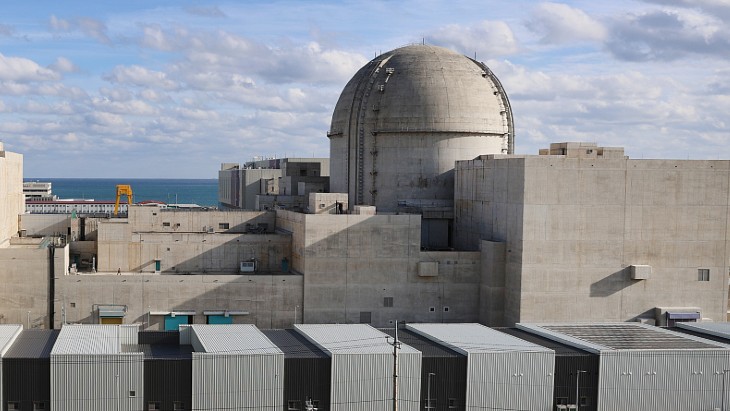Successive Labor and Coalition governments have maintained a bipartisan moratorium on the construction and operation of nuclear power plants in Australia. The parliament's House Standing Committee on the Environment and Energy began on 6 August an inquiry into the nuclear fuel cycle and Australia's potential future use of nuclear energy, at the request of Energy Minister Angus Taylor. The committee has since considered 309 submissions and undertaken a programme of public hearings across the country.
The committee has now released a report - entitled Not without your approval: A way forward for nuclear technology in Australia - in which it summarises its findings and makes recommendations. It has been presented to Speaker of the House of Representatives Tony Smith for the government's consideration.
The committee makes three key recommendations. Firstly, the government should further consider the prospect of nuclear technology as part of Australia's future energy mix. The committee says the government should be "goal-oriented" in seeking to deliver affordable and reliable energy while fulfilling its international emissions reduction obligations. It should also be "strategic in approaching the possibility of entering the nuclear energy industry" and "holistic in thinking about nuclear technology". The government should also be "community-focused" by involving the public in its discussions.
Secondly, the government should undertake a body of work to deepen the understanding of nuclear technology in the Australian context. This should involve a technology assessment on different generation of nuclear reactors including an examination of their feasibility and suitability to Australia. An economic assessment based on 'whole system costs' for baseload and peak demand should also be carried out. The committee says an assessment should also be made of what major requirements need to be in place before the country is ready to adopt nuclear energy. A community engagement programme should also be launched to educate and inform the public.
The third recommendation is the government consider a partial lifting of the current moratorium on nuclear energy for new and emerging technologies by "thinking discerningly about what types of nuclear technology should be considered". The lifting of the moratorium should also be conditional on the results of a technology assessment and the prior informed consent of impacted communities.
"Nuclear energy should be on the table for consideration as part of our future energy mix," said committee chairman Ted O'Brien, Member of Parliament for Fairfax in Queensland. "Australia should say a definite 'No' to old nuclear technologies but a conditional 'Yes' to new and emerging technologies, such as small modular reactors. And most importantly, the Australian people should be at the centre of any approval process.
"If we're serious about reducing greenhouse gas emissions, we can't simply ignore this zero-emissions baseload technology. But we also need to be humble enough to learn lessons from other countries who have gone down this path. It's as much about getting the technology right as it is about maintaining a social licence based on trust and transparency."
A poll conducted by the Minerals Council of Australia in early- to mid-October found 39% of the 1500 people questioned to be supportive of the use of nuclear power in Australia, with a similar level of support - four out of ten of those polled - supporting lifting the ban. Opposition to both the use of nuclear power and the lifting of the ban was about 33%, while 29% were either neutral or unsure on the use of nuclear power, and 26% were neutral or unsure on lifting the ban.
Australia has the world's largest known uranium resources and is the world's third-ranking producer of the metal, behind Kazakhstan and Canada, but it uses no nuclear power, generating most of its electricity from coal. The Australian Nuclear Science and Technology Organisation (ANSTO) has operated nuclear reactors for research and isotope production since the 1950s, currently at the OPAL reactor which commenced operation in 2006. The ANSTO Nuclear Medicine Facility in July received regulatory approval to move to full production of molybdenum-99 from uranium targets irradiated in OPAL, and is expected to begin supplying the vital medical radioisotope internationally later this year.
"It's great to see the Australian federal inquiry recommend lifting the country's long held ban on building nuclear power plants. We think this is a natural step as in many ways Australia is already a leading nuclear nation," said Agneta Rising, Director General of World Nuclear Association, which made a submission to the enquiry. "The country has a long and proud nuclear history and is well placed from a technical, regulatory and social standpoint to start a nuclear power programme. If Australia chooses to use nuclear energy it will join a long list of other countries which are embarking down this path."
Rising welcomed the committee's recommendation of an economic assessment of nuclear energy alongside other energy sources, including full system costs and the impact of carbon emissions. "Only when the full costs and benefits of different forms of electricity generation are considered can a fair comparison be made. Nuclear energy, should Australia choose to use it, could provide it with clean and reliable electricity supplies that would allow its economy to flourish while protecting its fragile and precious environment."

.jpg)



_72306.jpg)


_49562.jpg)





